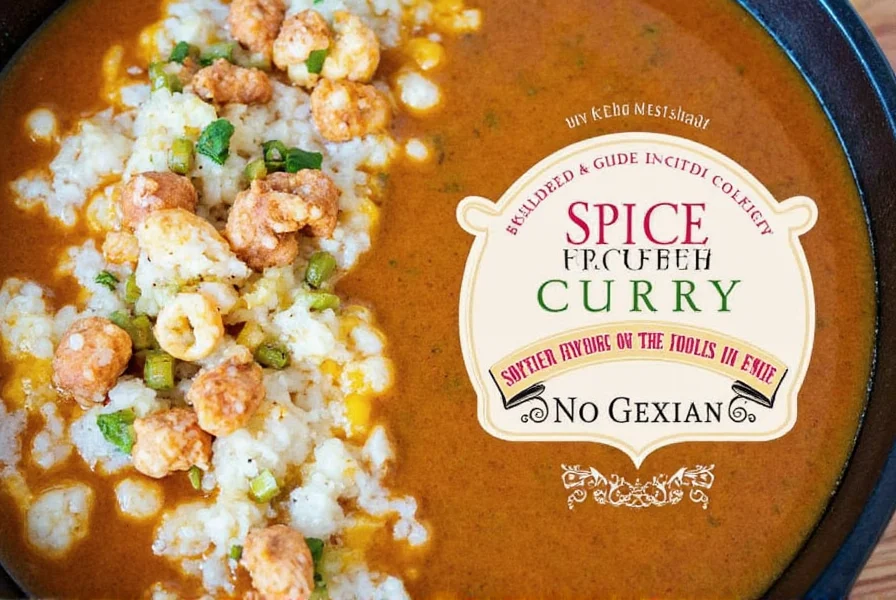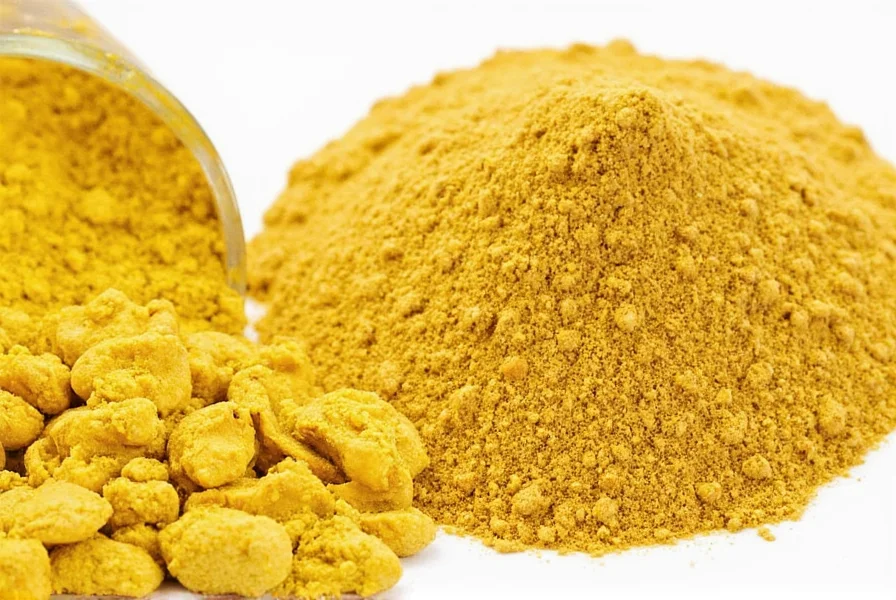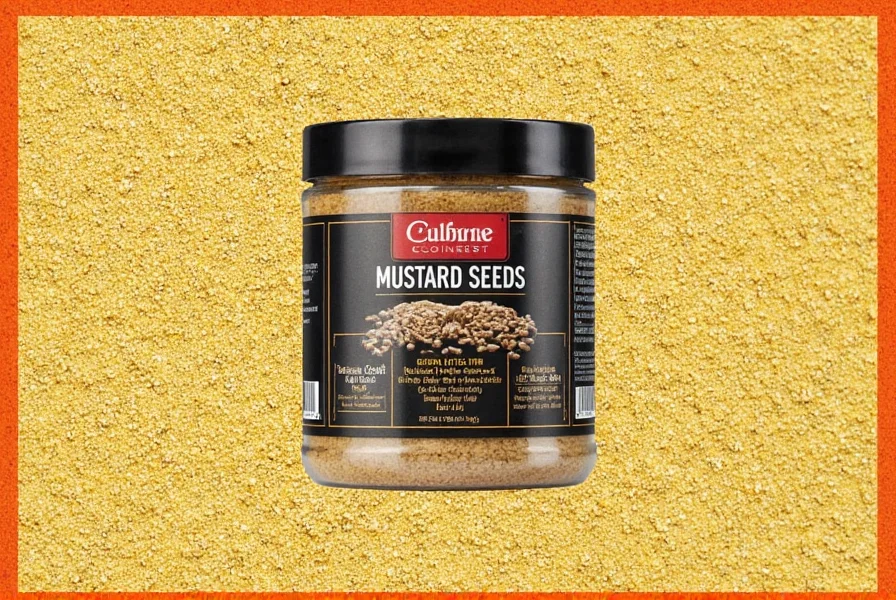Table of Contents
Introduction to Dry Mustard
Dry mustard is a ground form of mustard seeds used as a versatile spice in cooking. It provides a sharp, tangy flavor that enhances marinades, dressings, sauces, and baked goods without added liquids. This guide covers everything you need to know: how to use it, health benefits, substitution tips, and how to choose the best quality powder for optimal results.
What Is Dry Mustard?
Dry mustard is made by grinding mustard seeds into a fine powder. Unlike prepared mustards (like yellow or Dijon), it contains no liquid or additives, making it shelf-stable and highly concentrated. It activates when mixed with water or acidic liquids, releasing its signature pungent flavor. Historically, mustard seeds were used by ancient Egyptians and later popularized in medieval Europe for culinary and medicinal purposes.
| Mustard Seed Type | Flavor Profile | Best Uses | Health Benefits |
|---|---|---|---|
| Yellow Mustard Seeds | Mild, slightly sweet | Salad dressings, baked goods, basic sauces | Rich in selenium and magnesium; supports heart health |
| Brown Mustard Seeds | Medium heat, earthy | Marinades, pickling, curry dishes | Antioxidant properties; may reduce inflammation |
| Black Mustard Seeds | Strongest heat, pungent | Indian cuisine, spice blends, gourmet sauces | Contains glucosinolates; potential cancer-fighting properties (research ongoing) |
Uses and Recipes
Dry mustard is a flavor enhancer for both savory and sweet dishes. Here’s how to use it effectively:
- Marinades: Add 1 tsp per pound of meat for tenderizing and flavor depth.
- Salad Dressings: Whisk with olive oil, vinegar, and honey for a zesty vinaigrette.
- Homemade Mustard: Mix with water, vinegar, and salt; let sit 15 minutes for full flavor development.
- Gravies and Sauces: A pinch cuts through richness in creamy sauces like cheese sauce or béchamel.
- Baked Goods: Use in savory breads or muffins for a subtle spicy note.
Spicy Mustard Vinaigrette
Ingredients:
- 1 tbsp dry mustard
- 1/4 cup olive oil
- 2 tbsp apple cider vinegar
- 1 tsp honey
- 1 clove garlic, minced
- Salt and pepper to taste
Instructions:
- Whisk dry mustard, vinegar, honey, and garlic until smooth.
- Slowly drizzle in olive oil while whisking to emulsify.
- Season with salt and pepper. Store refrigerated for up to 1 week.
Tips for Using Dry Mustard
Maximize flavor with these expert tips:
- Activate Properly: Always mix with liquid (water, vinegar, or oil) before adding to dishes to release full flavor.
- Start Small: Begin with 1/4 tsp per serving and adjust—dry mustard is potent.
- Balance Sweetness: Pair with honey, maple syrup, or fruit to mellow sharpness.
- Store Correctly: Keep in an airtight container away from light and heat for up to 2 years.
Frequently Asked Questions
What is the difference between dry mustard and prepared mustard?
Dry mustard is pure ground mustard seeds with no liquid, while prepared mustard (e.g., yellow or Dijon) contains water, vinegar, and other ingredients. Dry mustard has a longer shelf life and must be hydrated to activate its flavor. For substitution, 1 tsp dry mustard = 1 tbsp prepared mustard when mixed with 2 tsp liquid.
How long does dry mustard last?
When stored in an airtight container away from heat and light, dry mustard retains peak flavor for 2-3 years. The USDA FoodData Central confirms it doesn’t spoil but loses potency over time. Replace if it loses its characteristic aroma.
Can I substitute dry mustard for prepared mustard in recipes?
Yes, but adjust ratios: 1 tsp dry mustard + 2 tsp liquid = 1 tbsp prepared mustard. Always let the mixture sit 10-15 minutes after mixing to fully develop flavor. For hot dishes, add dry mustard early to allow activation; for cold dishes, mix with liquid first.
What are the health benefits of dry mustard?
Dry mustard contains antioxidants and anti-inflammatory compounds. According to the USDA, mustard seeds are rich in selenium and magnesium, which support heart health. Studies in the Journal of Nutrition (2020) suggest glucosinolates in mustard may have cancer-fighting properties, though more research is needed. It’s low-calorie and fat-free, making it a healthy flavor enhancer. Note: This is general information, not medical advice.
How should I store dry mustard to keep it fresh?
Store in an airtight glass or metal container away from heat, light, and moisture. A cool pantry is ideal. For maximum shelf life (up to 3 years), refrigerate or freeze. Avoid plastic containers, which can absorb odors. Always check for clumping or off smells before use.
Is dry mustard the same as mustard powder?
Yes, "dry mustard" and "mustard powder" are interchangeable terms for ground mustard seeds. Both contain no additives. Check labels for "100% mustard seed" to avoid fillers like flour or anti-caking agents.
Can dry mustard go bad?
Dry mustard doesn’t spoil but loses potency over time. If it develops a musty smell, clumps, or shows mold (rare due to low moisture), discard it. For best flavor, replace every 2 years. Always store properly to prevent moisture absorption.
What dishes work best with dry mustard?
Dry mustard enhances cheese sauces (prevents curdling), barbecue rubs, salad dressings, marinades for meats, soups, and baked goods like rye bread. It’s a key ingredient in classic recipes like deviled eggs, potato salad, and French onion soup. For a unique twist, add 1/4 tsp to chocolate cake batter for depth.
Buying Guide for Dry Mustard
Choose high-quality dry mustard by focusing on these key factors:
Key Buying Criteria
- Purity: Look for "100% mustard seed" on labels. Avoid products with fillers like wheat flour or cornstarch.
- Seed Type: Yellow for mild flavor, brown for medium heat, black for intense spice.
- Certifications: Organic (USDA) or non-GMO for cleaner ingredients.
- Packaging: Opaque containers protect from light exposure, preserving flavor longer.
Top Recommended Brands
| Brand | Product Type | Key Features | Where to Buy |
|---|---|---|---|
| Spice Islands | Yellow Mustard Powder | 100% pure, fine grind, consistent quality | Amazon |
| Morton & Bassett | Organic Brown Mustard | USDA organic, no additives, robust flavor | Walmart |
| McCormick | Black Mustard Seed Powder | Strong heat, ideal for Indian cuisine | Target |
Conclusion
Dry mustard is a culinary powerhouse that elevates dishes with minimal effort. From enhancing everyday meals to gourmet creations, its versatility and health benefits make it essential for any kitchen. By understanding how to use, store, and select quality dry mustard, you’ll unlock new flavor dimensions in your cooking. Always start small, hydrate properly, and experiment confidently!













 浙公网安备
33010002000092号
浙公网安备
33010002000092号 浙B2-20120091-4
浙B2-20120091-4